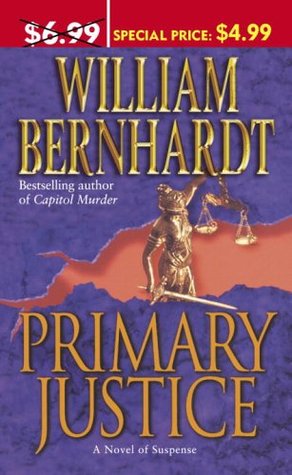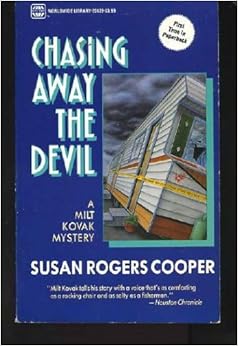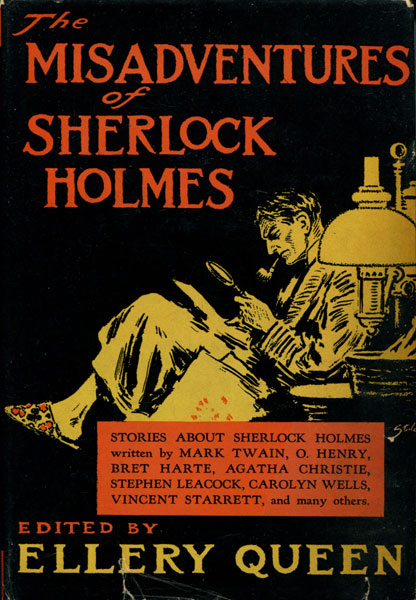Arthur Conan Doyle published his first Sherlock Holmes story in 1887 and his last in 1927. There were 56 stories in all, plus 4 novels. The final stories were published between 1923 and 1927. As a result of statutory extensions of copyright protection culminating in the 1988 Copyright Term Extension Act, the American copyrights on those final stories . . . will not expire until 95 years after the date of original publication -- between 2018 and 2022 . . . . The copyright on the 46 stories and the 4 novels, all being works published before 1923, [has] expired.
Klinger v. Conan Doyle Estate, Ltd.
755 F. 3d 496, 497 (7th Cir. 2014)
per Judge Richard Posner
Is there anything left to say about Sherlock Holmes? The fame of Arthur Conan Doyle’s iconic detective has now stretched across three centuries, with no expiration date in sight. . . . Recent books and graphic novels find the detective trading bon mots with Henry James, escaping the island of Doctor Moreau and squaring off against a zombie horde. One can also pick up Sherlock-themed tarot decks, rubber duckies, crew socks and — for undercover work — a “sexy detective” outfit featuring a deerstalker and pipe. And, needless to say, the digital landscape is ablaze with blogs, fanfic, Twitter feeds, podcasts and innumerable tributes to the cheekbones of Benedict Cumberbatch. What’s left? As Professor Moriarty once remarked, “All that I have to say has already crossed your mind.”
Daniel Stashower
The Washington Post, July 12, 2015
Reviewing
The Amazing Rise and Immortal Lives of Sherlock Holmes by Zach Dundas
 |
| Sir Ian McKellen in Mr. Holmes |
This week’s summer movie roll-outs included
Mr. Holmes, which features Sir Ian McKellen’s highly anticipated take on Sherlock Holmes at 93
— battling age and dementia as he tries to unravel one last case. The movie, based on the 2005 Holmes pastiche
A Slight Trick of the Mind by Mitch Cullin, actually offers the viewer two takes on Holmes, since the cinema version of the story features a “movie within a movie” in which Nicholas Rowe, who earlier portrayed the detective in
Young Sherlock Holmes, once again assumes the role in Watson’s version of the mystery that confounds the elderly Holmes. (Holmes views the movie version, based on Watson's account, in an attempt to jump start his failing memories of the case.) The fact that the movie offers a new take on Holmes
— indeed, two new takes, and that the same week yet another Holmes retrospective hit the bookstores
— Zach Dumas'
The Amazing Rise and Immortal Lives of Sherlock Holmes — is hardly surprising. For 130 years Sherlock Holmes has been, well, ubiquitous.
Ellery Queen had this to say in his (err, “their”) introduction to
The Misadventures of Sherlock Holmes: "
more has been written about Sherlock Holmes than about any other character in fiction. It is further true that more has been written about Holmes by others than by Doyle himself." We will return to that Ellery Queen anthology, but for now the important point is that no other detective
— not Miss Marple, nor Hercule Poirot, nor Ellery himself
— has so tempted other authors to lift their pens in imitation and tribute. And all of this begs a legal question: How, pray tell, have these new takes on Sherlock Holmes been reconciled with the copyright protection originally secured for the character by Arthur Conan Doyle?
A Proviso before going forward here: While I am a lawyer, I am NOT a copyright and intellectual properties lawyer. So, a caveat
— when I discuss copyright rules it may be a little like asking your family doctor to perform brain surgery. But with that in mind, the simple rule is that in the United States under the terms of the 1998 Copyright Terms Extension Act the author has copyright protection for 95 years following the publication of the author’s work. So if you are inclined to dabble in pastiches (and I plead guilty on that one), well, you need to do this only with the permission of the original author (or their estate) if the character you are using was created less than 95 years ago.
How easy is it to run afoul of copyright rules? Well, as promised above, lets return again to our old friend Ellery Queen for the answer to that question. In 1944 Queen published an anthology collecting most of the Holmes pastiches and parodies then in existence,
The Misadventures of Sherlock Holmes. Of all Ellery Queen volumes this one is likely the rarest. If you want to secure a copy on Amazon
it will probably set you back around $150.00. Why? Well, the anthology, it turns out, was published without first securing a license from the estate of Arthur Conan Doyle. As a result, it was quickly pulled from publication when the estate threatened to sue, and only a limited number of volumes ever reached book stores. (As an aside, notwithstanding all of the above, a rough version of
The Misadventures of Sherlock Holmes is, as of this writing, rather mysteriously available for downloading on the internet! Just click
here.)
But, in any event, Ellery's stumble over the copyright rules was way back in 1944, right? Back then the first Sherlock Holmes stories were not even 60 years old. What about today? In 2015 almost 130 years separates us from the first Holmes adventure,
A Study in Scarlet. So Sherlock should have squared his tweed-draped shoulders and marched into the public domain almost 35 years ago, right? Well, not so fast. The Doyle estate has historically taken a different (and predictable) approach when it comes to counting those intervening years.
As the quote at the top of the article points out, the “last bows” of the Sherlock Holmes stories were the ten final mysteries written by Arthur Conan Doyle between 1923 and 1927. And, counting it up, the 95 year copyright on
those stories has yet to expire
— and won’t begin to for another three years. The Doyle estate has argued that a “fully rounded” (their words) Holmes and Watson arose only upon completion of the entire Doyle canon. Thus, the estate argues, copyright protection continues until 2022, i.e., 95 years after the
last story was published in 1927. Pause and think about this: The Copyright laws speak of a protection period running for 95 years from the
first appearance of a character, but the Doyle estate argues that this in fact means 95 years from the
last appearance of the character. The argument sounds more like George Orwell than it does Sherlock Holmes!
The Doyle estate implemented their concededly expansive view of copyright protection in a rather clever manner. The estate decided to charge $5,000 in licensing fees for every use of Holmes and Watson, reasoning that the amount, while substantial, was far less than the cost of subjecting the “fully rounded” theory to a test in litigation. So their assumption was that those wishing to write about Homes and Watson might grumble, but they would pay. All went well with this approach until Leslie Klinger came along.
Klinger co-edited an anthology of Sherlock Holmes pastiches and parodies in 2011 titled
A Study in Sherlock: Stories Inspired by the Sherlock Holmes Canon. Klinger dutifully paid the $5,000 demanded by the Doyle estate before publishing that collection. But when he and his co-editors decided to proceed with a sequel,
In the Company of Sherlock Holmes, they also decided that enough was enough and refused to pay for a license. The Doyle estate escalated the dispute, threatening to sue if publication occurred without a license. Klinger responded by suing the estate, claiming that Holmes and Watson were in the public domain and had been since 1982, that is, 95 years after
A Study in Scarlet was published. As a result, Klinger argued, no license was required.
A federal district court, and ultimately the Seventh Circuit United States Court of Appeals, eventually settled the matter. In May of 2014 the Seventh Circuit agreed with the district court’s decision and
held that the Doyle estate’s argument was wrong. The court instead agreed, as Klinger had argued, that Sherlock Holmes entered the public domain, and became “fair game” for other writers, 95 years following the publication of the first Holmes story.
But how does one handle the refinements to Holmes and Watson that occurred in those later stories, that is, the “rounding” of the characters on which the estate had relied? Well, the court answered that question by concluding that only Holmes and Watson as portrayed in the original series of stories by Doyle are currently in the public domain; that is, the characters as portrayed prior to 1923. And any subsequent nuances to the character
— those “well rounded” attributes on which the estate’s arguments were based
— remain protected by the copyright laws.
How does this work in practice? Well, as Barack Obama, among others, has observed “a good compromise leaves everyone unhappy.” The estate doesn't get its $5,000, but the author of a pastiche nonetheless writes at his or her peril since the use of attributes only arising in the last 10 Holmes mysteries infringes the continuing copyright on those stories.
The Seventh Circuit’s opinion only identifies a scant few areas in which Doyle’s characters became "more rounded” in the later Holmes stories that are still copyright protected: First, Holmes (apparently) likes dogs; Second, Watson was married twice. (On that latter point, I think
W.S. Baring-Gould set the number of marriages at three, but I won’t argue the point
— particularly without a license!) So the “rounding” of Sherlock Holmes and Watson may be limited, but what does this rule mean for other characters who appeared in a series of works over the years? Let us take, for example, my old friend Ellery Queen.
Ellery’s earliest appearance was in
The Roman Hat Mystery, which was published in 1929. Thus, all of the Queen canon is still copyright protected. But what happens in 2024, when the first appearance of Ellery reaches its 95th birthday and the canon begins its seriatim march into the public domain? Arguably under the Seventh Circuit’s reasoning Ellery can be used freely by other authors as of that date. But beware: Ellery better be wearing
pince-nez glasses, and he might be advised to only employ a Duesenberg for transportation. He should also have retired, with a wife and son, to Italy. All of those early aspects of Ellery disappeared by the middle of the Queen canon as Ellery Queen and the Inspector were "rounded" by Frederic Dannay and Manfred B. Lee. In fact the first evidence of the Ellery of the latter half of the canon did not appear until about 1936, with the publication of
Halfway House. So unlike Sherlock, there are unmistakable differences between early and late Ellery!
And if all of this were not confusing enough, let’s throw into our copyright primer the fact that parodies of copyrighted materials, unlike pastiches, fall
completely outside of the protection of copyright without worrying at all about the passage of time. This exception to copyright protection is established and was famously re-invigorated in 2001 when
the Eleventh Circuit held that
The Wind Done Gone, a re-telling of
Gone With the Wind from the perspective of the enslaved residents of Tara, did not infringe Margaret Mitchell’s copyright of the original story.
So let us return again to Queen and see how
that rule would work. Well, apparently the great Jon L. Breen could have freely published his humorous short story mystery “The Lithuanian Eraser Mystery,” (EQMM March, 1969), in which “E. Larry Cune” solves a New York City theatre murder. That story is a parody, no question. Tongue is firmly planted in cheek. But, by contrast, Breen needed a license in order to publish “The Gilbert and Sullivan Clue,” (EQMM Sept. 1999) since Ellery himself solves that theatrical-based mystery. And what about Francis Nevins famous pastiche “Open Letter to Survivors” (EQMM May, 1972), a story that, while clearly featuring Ellery, never in fact names him as the young detective? I asked Mike Nevins, a copyright professor himself, whether he secured a license for that story and his reply was that Frederic Dannay, then the editor-in-chief of EQMM, never brought up the matter one way or the other when the story was accepted by EQMM for publication.
But back to Sherlock
— when you see that new movie,
Mr. Holmes, you might reflect on all of this, and what it can take to breathe new life into another author's character. And think about the "rounding" of Holmes that had nothing to do with Arthur Conan Doyle
— particularly Sherlock Holmes as portrayed in the movie and in Mitch Cullin's original pastiche. As Holmes explains in each, part of his task in telling this story on his own, without Watson as narrator, is setting the record straight, removing the "excesses" of the Watson versions of his stories. As an example, you will note that Sir Ian McKellen’s Holmes prefers cigars to a pipe. That “rounding” of the famous detective’s character has absolutely no precedent in the Arthur Conan Doyle canon, either before or after 1923. So at least when Sherlock enjoys his cigar we needn't go back to the Holmes canon looking for references that might prove significant for those pesky copyright laws.
Come to think of it, a similar observation might be made concerning the title of this article. Arthur Conan Doyle's Sherlock Holmes never once used the phrase "elementary my dear Watson!"























 Okay, so there's no mystery here unless you are mildly curious about a bunch of grapes. It's also not about wine making or the wrath of the grapes or even the hilarious Lucy episode of stomping grapes.
Okay, so there's no mystery here unless you are mildly curious about a bunch of grapes. It's also not about wine making or the wrath of the grapes or even the hilarious Lucy episode of stomping grapes.

















